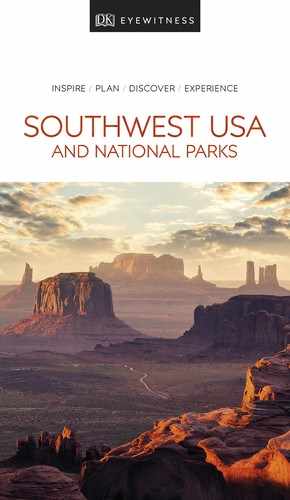The highest number of natural stone arches found anywhere in the world are in Arches National Park, one of the most popular national parks in the region. There are more than 2,000 of these red rock wonders; along with pinnacles, towers, and balanced rocks, they make a stunning sight against the deep-blue desert sky.
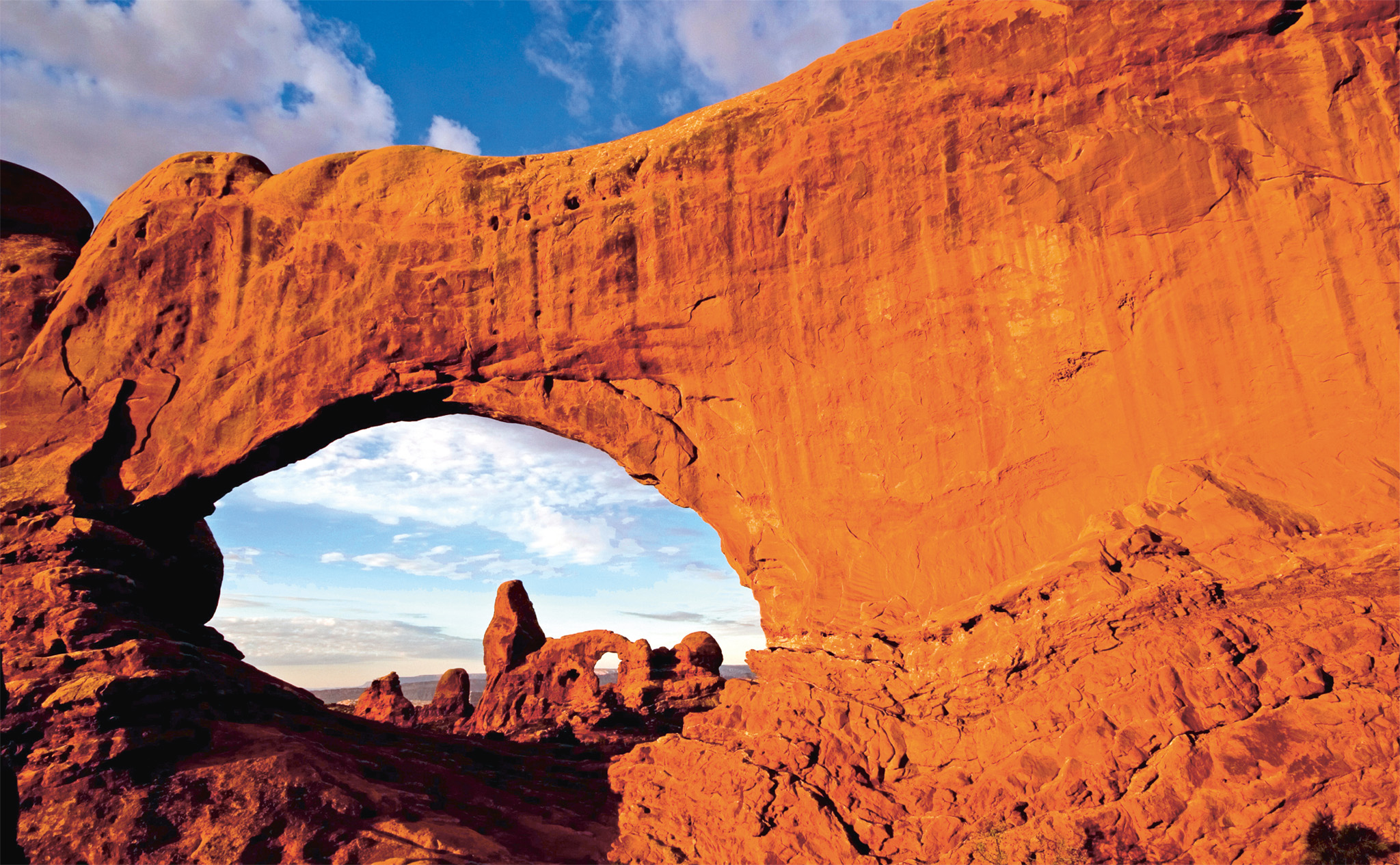
t Turret Arch seen through the South Window in the scenic Windows Section
Experience Southern Utah
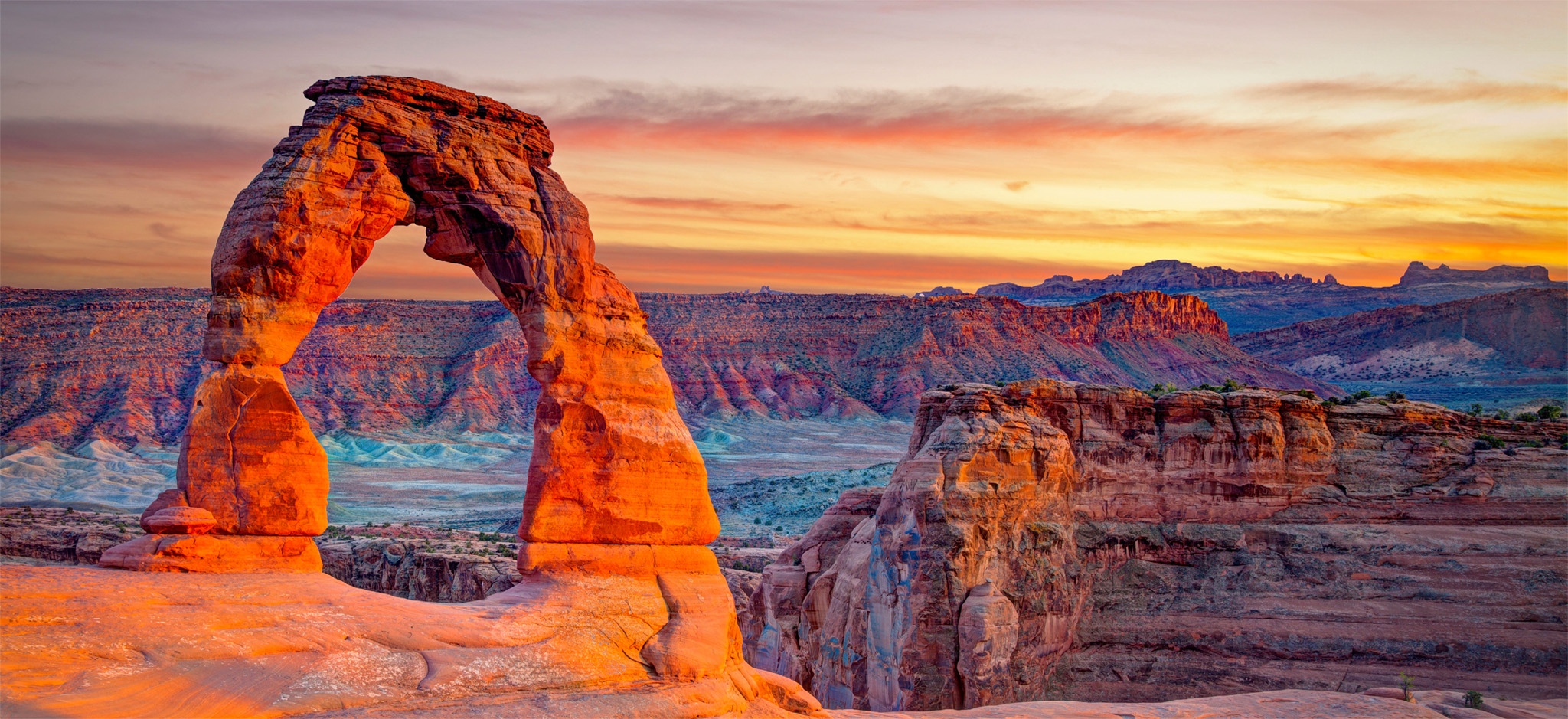
t The landmark Delicate Arch, surrounded by a natural amphitheater
The arches are formed through a process that takes millions of years; today’s arches continue to slowly erode and will eventually collapse. The Arches Visitor Center provides an excellent introduction to the geology of this beautiful but fragile land, which continues to be chiseled away by the forces of nature. Many of the landmark arches can be seen from the main road through the park, and a wealth of hiking trails lead deeper into this amazing landscape. One of the best descriptions of the park’s pristine beauty is by author and environmentalist Edward Abbey, who worked here as a park ranger in 1956–7, and wrote about the landscape in his classic memoir Desert Solitaire.
Exploring Arches National Park

t Kayaking up the Colorado River below the cliffs of Arches National Park
Arches National Park becomes extremely busy from March through October, especially around holiday weekends. Parking at popular trailheads is limited and full most of the day. To avoid congestion at the entrance gate and parking areas, arrive early in the morning or late in the afternoon.
The park’s highlights can be seen from the many viewpoints dotted along the Arches Scenic Drive. It starts at the visitor center at the park’s south end, just off Highway 191. If you spend ten minutes at each viewpoint, it takes about a total of three hours to drive the entire park road. Several easy trails start from parking lots at the road’s viewpoints. The loop at Balanced Rock is a short trail suitable for children; part of it is paved and accessible to wheelchairs. Delicate Arch Viewpoint is a similarly gentle hike. The short Windows loop is an easy trail suitable for families, its first 100 yards are wheelchair-accessible. Following the bottom of a canyon, the Park Avenue Trail leads past huge rock monoliths, including the Courthouse Towers and Nefertiti.
In addition to hiking, biking is a popular activity in and around the park. Bikes are only allowed on the park’s designated roads, paved and unpaved. Several outfitters in Moab offer tours on a range of mountain bike trails. The park has several rock climbing routes; most are difficult and are suitable only for experienced climbers. Local companies around Moab offer jeep tours, horseback riding, and rafting or kayaking trips on the Colorado and Green rivers.
Did You Know?
A state symbol, Delicate Arch appears on many Utah license plates.
Nature’s Sculptor
The Arches National Park “floats” on a salt bed, which was created about 300 million years ago. Over millions of years, this salt layer liquefied under the pressure exerted by the rock above it, and eventually bulged upward, cracking the sandstone above. Over time the cracks eroded, leaving long fins of rock. As these fins in turn eroded from the ground up, the remaining sec-tions of rock formed arches, which range today from the solid-looking Turret Arch to the graceful Delicate and Land-scape arches.

Picture Perfect
Light and Shade
Late afternoon and early evening are the best times for photo-graphy at the Arches National Park. The red arches glow in the setting sun, and there’s a beautiful play of light and shadow. The warm light of early morning is another good time to capture colorful hues.
EXPERIENCE Southern Utah
Park Highlights |

Petrified DunesCovering several acres, these unusual formations lie between Courthouse Towers and the Windows areas. They were created when ancient sand dunes hardened into stone beneath layers of heavier sediment that later eroded away. Watch for the scenic overlook off the main park road. |
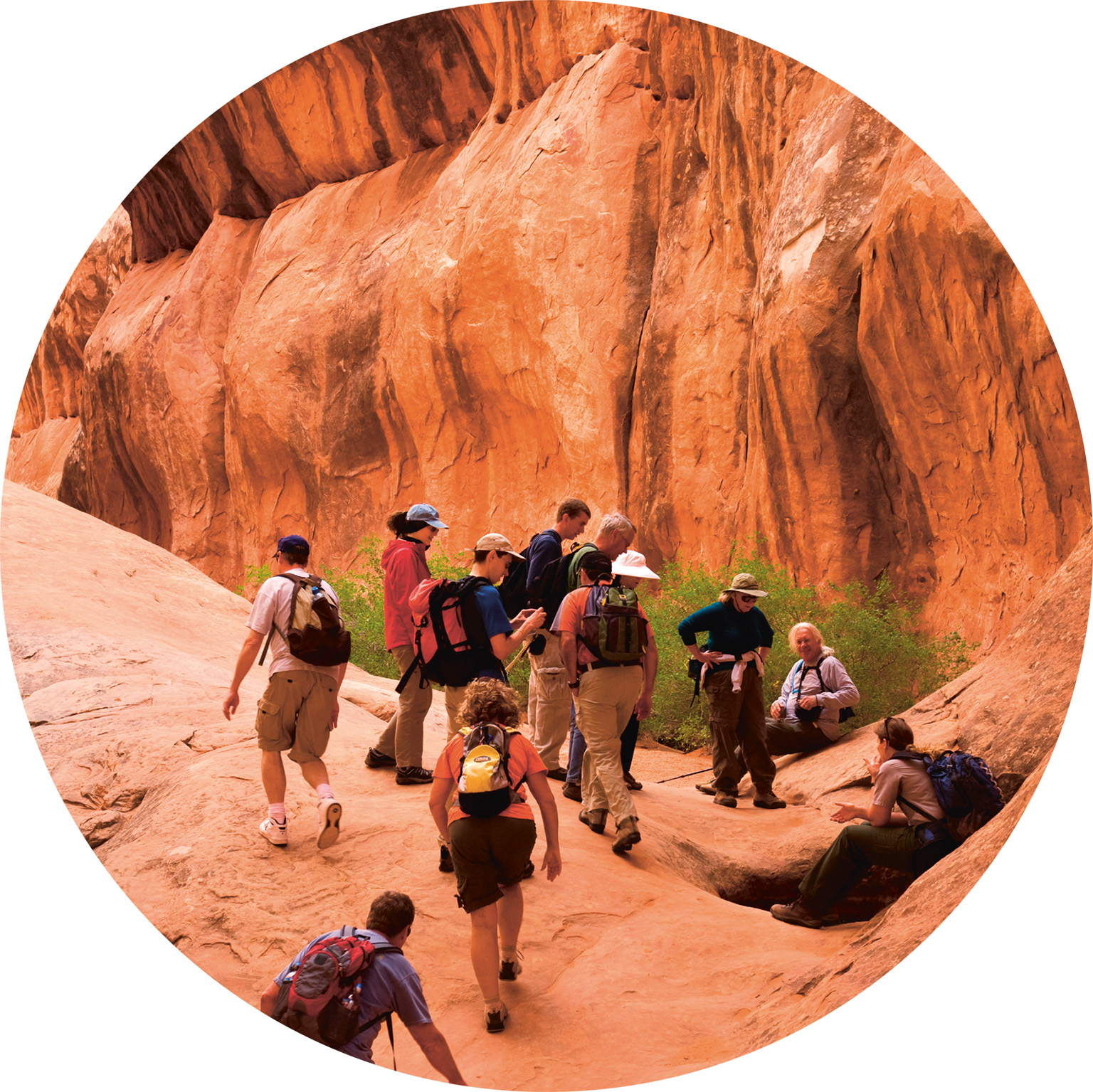
Fiery FurnaceDiscover hidden arches on ranger-led walks in this spectacular maze of narrow passages, sculpted rocks, and canyons, which takes its name from its fiery glow at sunset. There are morning and evening walks; sign up in advance at the visitor center. This is a challenging hike, and permits are required if not entering the area on a guided walk. |
The Windows SectionIn this section, a one-mile (1.6 km) loop trail leads to Turret Arch, then the North and South Windows arches, situated side by side. With excellent viewing spots available, many visitors photograph North and South arches, framed by the sandstone Turner Arch. |
Wolfe RanchThe park was once home to John Wesley Wolfe, a Civil War veteran who built a small ranch in the late 1800s. The rustic wood cabin he shared with his family still stands and is listed on the National Register of Historic Places. |
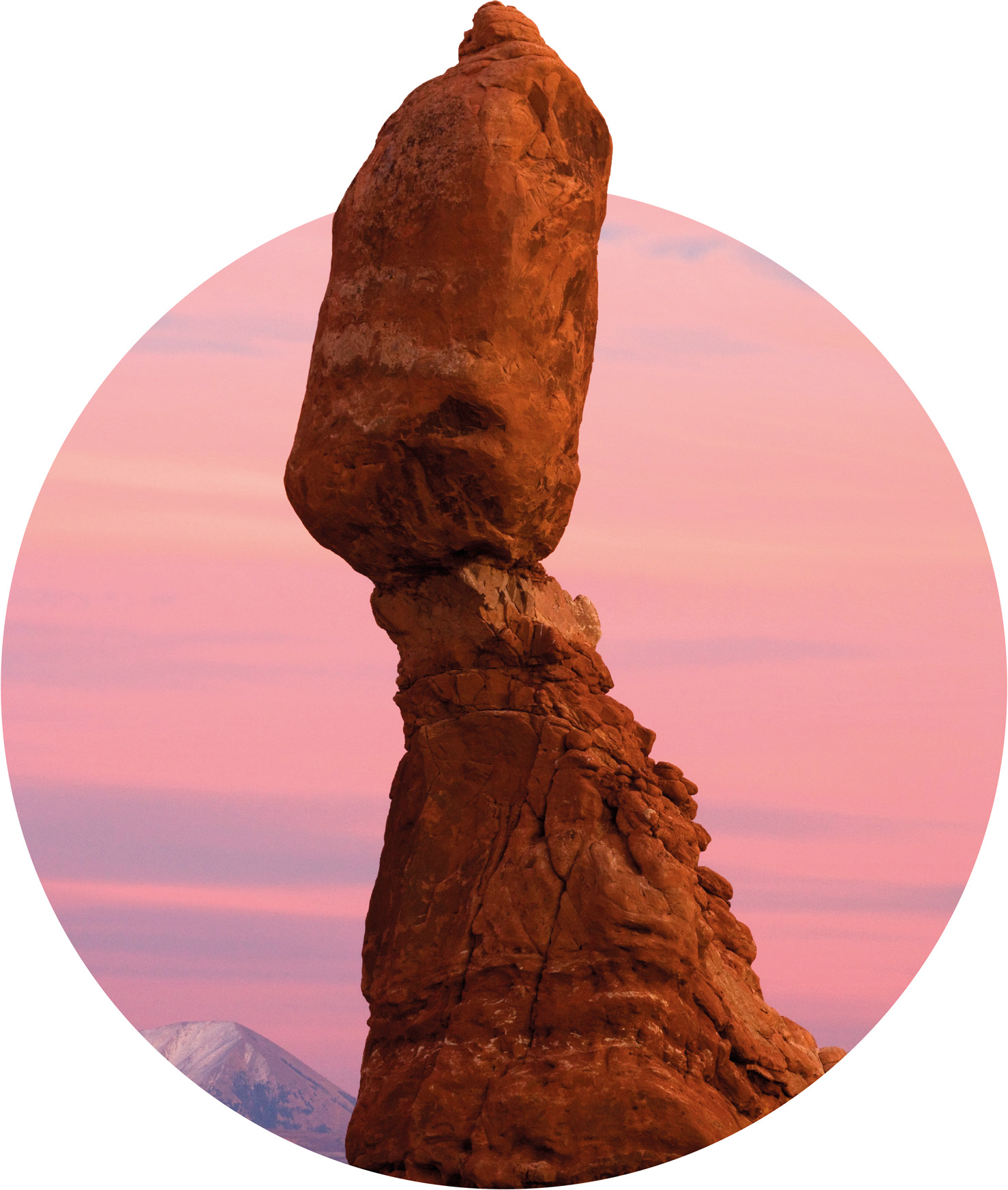
Balanced RockThis formation, consisting of a precariously balanced boulder on top of a sandstone spire, reaches a height of 128 ft (39 m) and is one of the park’s most famous icons. Good views of it are available from the trail as well as the scenic road route. Don’t miss this awesome spectacle, as eventually the gravity-defying boulder will topple down as the rocky landscape continues to erode. |
